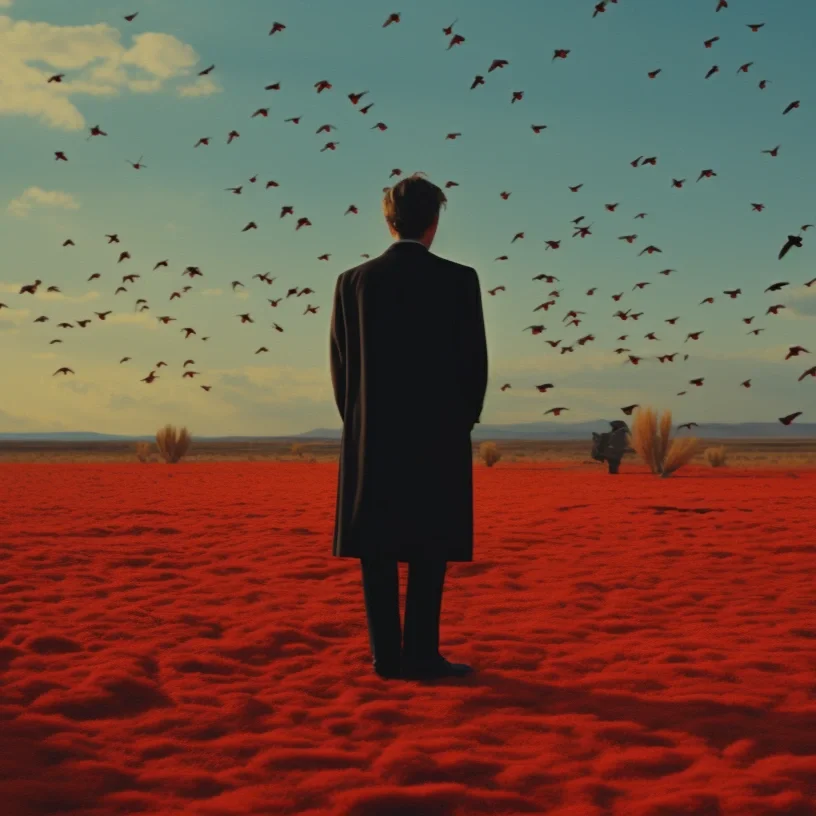The Disorientation Economy: Drowning in Headlines, but Starving for Meaning
There is a particular kind of unease which sits beneath turbulent news cycles. The ambient hum of tension which has less to do with any individual story and more to do with the conditions in which those stories are delivered. The cumulative effect of what modern news ecosystems have found themselves optimized for. Constant visibility without corresponding understanding. Overexposure dangerously coupled with undereducation.
For decades, news has expanded its surface area. More channels, more formats, more alerts, more notifications, more breaking, without expanding the cognitive or contextual scaffolding necessary for citizens to make sense of the information they receive. The result is a public that is not uninformed, but unmoored. Inundated with stories, yet increasingly unable to situate those same experiences within coherent frameworks.
In a climate where truth is contested, where AI-driven misinformation accelerates faster than verification systems can keep pace, where social platforms have eroded the slow, consensus-building functions of journalism, and where media itself has become a target for political weaponization, the consequences of this imbalance are profound. Overexposure drives fatigue and anxiety. Undereducation compounds it by doubling down on vulnerability.
To understand how we arrived here, it helps to examine the nature of the shift itself.
For most of the 20th century, news was characterized by scarcity. Limited airtime, finite column inches, and institutional gatekeeping (for all its flaws) inherently constrained how much information could reach an audience within a single day. Scarcity enforced prioritization. It also created a temporal rhythm. Morning paper, evening broadcast, which preserved a discernible boundary between daily life and public affairs.
Over the past 30 years, those boundaries have dissolved. The 24-hour news cycle accelerated the tempo. The internet collapsed geography. Mobile computing made news omnipresent. Social networks transformed distribution into something fluid, unmediated, and algorithmically optimized for engagement over enlightenment. Now AI introduces a new structural volatility. The ability to generate persuasive falsehoods at scale, often indistinguishable from verified reporting until long after any damage has been done.
Each step increased exposure. Yet none required or motivated an increase in comprehension.
In behavioral terms, curated information intake was replaced with ambient information proximity. The user is now always adjacent to the news, even when they do not intend or desire to be. This produces a condition similar to chronic cognitive noise. We feel perpetually addressed. Perpetually implicated. Perpetually behind.
But exposure alone is not knowledge. And without education, context, explanation, proportion or systems thinking, the sheer volume of stimuli becomes overwhelming. Our nervous systems were simply not built for this density.
From the perspective of cognitive science and psychology, the pattern is predictable.
Constant exposure to unprocessed or under-contextualized information induces cognitive overload. Overload narrows attention, reduces working-memory capacity, and diminishes our ability to make reasoned judgments. It also elevates anxiety and fosters a sense of disorientation. What psychologists sometimes call meaning fatigue.
Meaning fatigue occurs when individuals are confronted with more events than they can interpret. They do not disengage due to apathy, but due to a fundamental mismatch between information volume and their own cognitive bandwidth. They begin to experience the news not as a civic resource, but as a stressor.
This is the soil in which misinformation thrives.
When comprehension is low but emotional activation is high, simplistic narratives become attractive. Outrage becomes a shortcut. Conspiracy becomes a coping mechanism. Certainty, however false, becomes psychologically preferable to ambiguity.
None of this is a reflection of personal weakness. It is the predictable outcome of a system which prioritizes immediacy over intelligibility.
Undereducation, in this context, does not refer to an arrogance of schooling. It refers to the absence of sustained comprehension frameworks designed to help citizens understand how news events relate to institutions, processes, history, incentives, and power. Without these frameworks, we cannot easily distinguish what is significant from what is merely visible, what is structural from what is anecdotal, what is new from what is newly amplified, or what is uncertain from what is verified.
This leaves audiences susceptible to manipulation. If we cannot contextualize information, others will contextualize it for us, and not always in good faith.
The result is a population which is simultaneously hyperaware and underinformed. Highly stimulated but poorly oriented. In democratic societies, this is more than a media problem. It is a civic vulnerability.
While systemic reform feels like a necessity, individuals cannot wait for institutions to catch up or self-police. A healthier relationship with news requires deliberate, tactical recalibration at the level of personal consumption. The goal is not withdrawal, but resilience.
Drawing from positive psychology, there’s a few practices and interventions which might help restore equilibrium.
Replace continuous monitoring with intentional intervals
The human mind is not designed for perpetual vigilance. Checking news intermittently, as opposed to reflexively, reduces ambient anxiety and increases the likelihood of processing information meaningfully rather than reactively. Choose one or two dedicated times per day for news intake. Let the rest of the day remain intact.
Prioritize depth over volume
One well-researched, clearly contextualized piece of reporting is worth more than dozens of fragmented updates. Opt for slower formats. Long-form articles, in-depth explainers, newsletters from journalists you trust, and reliable public-service outlets. These formats expand understanding rather than accelerate stimulation.
Build a personal context layer
When major topics recur, such as climate, elections, global conflicts, or the economy, find stable, non-sensational resources which establish baseline understanding. Revisit them periodically. This reduces the cognitive labor required to make sense of each new headline.
Develop a habit of proportion
Ask yourself simple but clarifying questions. Is this an event or a trend? Does this affect many, or is it an isolated case? What is unknown? Who is amplifying this, and why? Proportion is an antidote to both panic and manipulation.
Create friction between stimulus and interpretation
Before reacting or sharing, impose a deliberate moment of evaluation. Even a brief pause interrupts the reflexive loop which misinformation depends on. This is not about skepticism as default, but about cognitive self-protection.
Reintroduce locality
National and global events matter, but so does the immediate context in which we live. Local news, local politics, and local civic engagement provide a sphere of influence which is tangible and stabilizing. When all information feels distant and unsolvable, hopelessness grows. Local grounding counteracts that drift.
A more stable orientation to the world
The core problem is not that we are overwhelmed by news. It is that we are overwhelmed without tools. Exposure without education does not create informed citizens. It creates anxious ones. At scale. And where anxious citizens are less capable of discerning truth, resisting manipulation, or participating constructively in civic life.
Rebalancing this requires a more serious, more deliberate approach to how we consume information. One which honors and respects the limits of human cognition rather than pretending those limits do not exist.
If overexposure is the condition of our time, undereducation is the consequence. But neither is inevitable. With intentional practice, we can reassert agency over our informational landscape. We can restore clarity where the system produces noise. And we can become better informed. Anchored rather than adrift. Attentive rather than overwhelmed. Oriented rather than exposed.
In an age of weaponized narratives and contested realities, such orientation is not merely helpful. It is essential.
Latest Articles




















